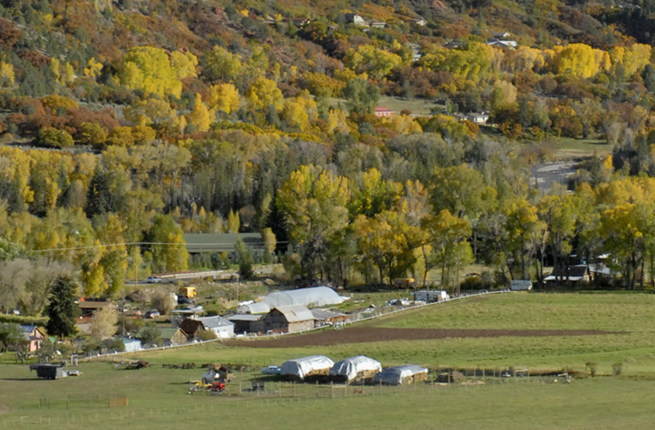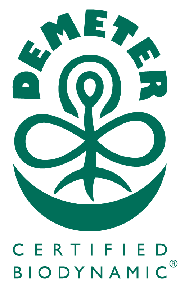
What is a windbreak? The Natural Resource Conservation Service defines windbreaks as: plantings of single or multiple rows of trees and/or shrubs established for environmental purposes. At Sustainable Settings we also look at windbreaks as a guild system; a forest ecology. Our windbreak guilds are agricultural systems designed to host many elements and to serve many functions.
In designing our windbreak guilds we look to:
- Reduce wind erosion
- Protect growing plants
- Manage snow build up
- Provide shelter for buildings and livestock
- Provide a tree or shrub crop for potential resale
- Provide potential woodlot for fuel
- Provide wildlife habitat and forage
- Provide forage for livestock
- Provide biomass for mulch and compost
- Provide living screens – visual and sound buffers
- Improve aesthetics of the site
- Improve irrigation efficiency
- Improve buildings energy efficiency
- Increase forested canopy in our world (reforestation)
The appropriate combination of trees, shrubs and ground cover make an effective windbreak. Their leaves and branches absorb some of the wind’s energy and deflect the wind up and over areas. This reduces the wind velocity or wind chill effect of the downwind-or leeward-side of the windbreak forming protective microclimates. The greatly reduced wind chill in winter and blast furnace heat of summer can alter a sites growing potential by an agricultural zone or two.
Energy Efficiency:
Windbreaks have been called a low-tech solution to a high-tech problem. The high-tech problem is how to reduce our growing demand for energy. The energy we speak of is in the form of heating and cooling our buildings and in snow removal services. Utilizing direct solar inputs is an obvious way to cut energy costs. Another solution is the use of windbreaks. Windbreaks are known to reduce heating bills by blocking cold winter winds and save on cooling costs when placed to shade from summer sun.
Snow Management:
In areas of high wind and blowing snow, windbreaks serve the dual purpose of modifying climatic factors and providing methods for managing snow. They can be designed to spread snow across a large area or to confine it to a relatively small storage area, keeping it off roads and buildings. If designed and managed properly these snowbreaks can greatly reduce the energy and costs required for snow removal services.
Increased Native Habitat and IPM:
Creating these windbreaks as forest guilds increases important habitat for native insects, birds, and mammals which establishes a self regulating system similar to naturally occurring ecologies. The birds and small mammals come to the forested canopy to forage and nest and help manage mulch and fertilize the trees and shrubs with their manure. We have also recently found that for effective long-term health of beneficial insect communities, as part of our Integrated Pest Management (IPM) strategy, it is essential to establish habitat appropriate for the various species that parasitize the insects that are detrimental to crops. There are, for instance, 30,000 known species of parasitic wasps. To reproduce these wasps need a canopy of woody plants that is within proximity of 15 to 20 feet from the crops and their prey of aphids, beetle larvae, etc. This particular aspect has encouraged us to design a system of alley cropping for production of annual crops. The alleys being created by planting forest guilds on swaled contour. (See our data sheet on Alley Cropping)
Windbreak considerations:
Height: The height of the barrier is determined by the tallest row in a planting. Height affects snowdrift depth and length, and how far the wind is thrown over a particular area before it picks up velocity again.
Density: Barrier density is determined by the species, number of rows, spacing between rows, and spacing of plants in the row. These variables determine how much wind will be allowed through the break or tossed over the top. A permeable windbreak allows some airflow through and extends its wind protection a greater distance. In a dense windbreak a down wind draws the wind back to the ground quicker, drying soil and cutting the distance it throws the wind.
Length: The barrier must extend at least 100 feet beyond the end of buildings, roads or areas it is designed to protect. Winds deviate so the length of the barrier should be long enough to accommodate shifts in the wind.
Location: An effective windbreak should be 100 feet away from buildings or roads. If placed closer, turbulence created by the windbreak reduces protection provided by the trees.
Other considerations:
<li><i class=”icon-leaf”></i>Choose trees and shrubs that serve multiple purposes in the forest ecology/ guild, i.e. nitrogen fixing, animal fodder, human food, wood lot, erosion control, nursery stock.</li>
<li><i class=”icon-leaf”></i>Planting in sealed communities along contours adds extra erosion control and aids a sound irrigation strategy to the system.</li>
<li><i class=”icon-leaf”></i>Choose native, (here Rocky Mountain or Western US) plants when ever possible.</li>
Species we are considering for Woody Creek site:
Conifers: Function in Windbreak Guild System
Trees: Primary conifer canopy:
Colorado Spruce (Picea pungens)- ornamental/wood product, branches to the ground
Ponderosa Pine – ornamental/wood product
Douglas fir – ornamental/wood product, branches to the ground
Shrubs: Secondary conifer canopy
Rocky Mountain Juniper – wildlife forage, ground cover
Pinion pine – Wildlife forage /ornamental
Deciduous:
Trees: (medium height) Primary Deciduous Canopy
Aspen – native habitat, biomass for mulch, potential seed crop
Cottonwood – native habitat, biomass for mulch, deep rooted/
erosion control, best for riparian sites-very thirsty
Hazelnut – human and native mammal food source, biomass for mulch
Western Redbud – native habitat, Nitrogen fixer/ soil nutrient builder, wildlife
forage, biomass for mulch
Black Locust – native habitat, Nitrogen fixer, wildlife forage, biomass for mulch
Shrubs: Tertiary Canopy
Buffaloberry – nitrogen fixer, wildlife forage and habitat
Red osier dogwood – ground cover, wildlife forage and habitat
Alder – nitrogen fixer, wildlife forage and habitat
Chokecherry – human and native species forage
Sumac – color/beauty, lemonade, soil erosion control, native forage
Cotoneaster – decorative fruits, habitat (introduced)
Siberian Pea shrub- nitrogen fixer, wildlife forage
Sagebrush- wildlife forage and habitat
Lilac – wildlife forage, Ornamental
Mountain mahogany – nitrogen fixer
Under story: (ground cover)
Creeping Oregon grape – food
Comfrey – mulch, fodder
Kinnickinnik – food
Strawberry – food

